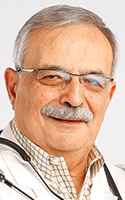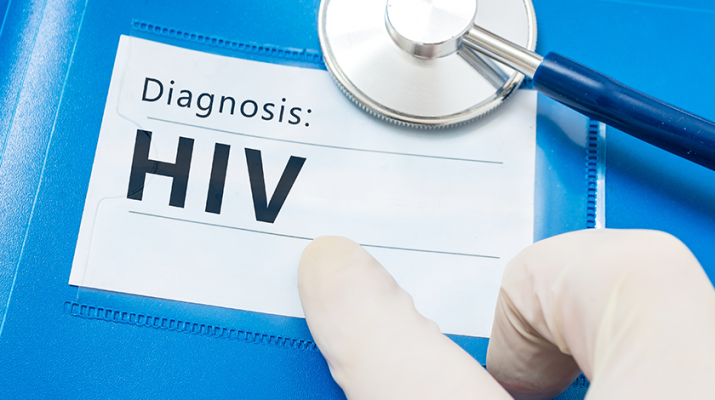Fifty to 100 new cases per year are identified in the Rochester region
By Deborah Jeanne Sergeant

New York ranked fourth in the nation for new cases of human immunodeficiency virus (HIV) in 2015, and ninth in 2016, according to statistics provided by the Centers for Disease Control and Prevention. Of those infected with HIV, one in seven doesn’t realize it.
Physician William Valenti, staff physician and co-founder of Trillium Health in Rochester, said that New York’s high ranking is somewhat skewed by New York City.
“We identify 50 to 100 new cases in the Rochester area per year,” he said.
That’s a far cry from the 2,052 people in New York City diagnosed in 2016, according to www.aidsvu.org.
More than 108,000 people living in New York City have HIV/AIDS and 20 percent do not know they are infected, states the website of Gay Men’s Health Crisis, a provider of HIV/AIDS prevention, care and advocacy in New York City.
Valenti said that although the rate of new HIV infections is higher in New York City than in Upstate, the rate is decreasing in New York City, unlike Upstate’s stagnant figures.
He said that behavioral intervention, such as using condoms and limiting sexual partners “are not as effective by themselves as a part of a medical and health care intervention. Medical care will become biomedical intervention. That is going to help turn this around.”
Valenti said that Trillium reaches out to at-risk populations through social media more than traditional methods, such as an information booth at a festival.
Same-day treatment and offering small supplies of free medication to uninsured people trying to set up health benefits or entitlements are also ways that Trillium is trying to make access to medication easier. No cure for HIV exists, although a bevy of medications can slow it and improve quality of life.
Trillium and other providers prescribe pre-exposure prophylaxis (PrEP) to HIV-negative people at high risk for infection who aren’t likely to adhere to behavioral changes. A daily dose has proven 95 percent effective or higher in suppressing transmission through sexual behavior. Researchers have not determined if the same holds true for shared needles.
Roxanna Inscho, program coordinator for the HIV/STD Prevention Program with the Monroe County Department of Public Health, calls PrEP “a great tool” for halting the spread of HIV. Post-exposure prophylaxis (PEP) is part of another strategy.
When a diagnosis is made, the program works with patients to contact others who may have been exposed so they can take PEP to reduce their risk of infection. PEP should be started within 36 hours but no later than 72 hours after exposure to HIV. Taken within that timeframe, it’s 80 percent effective.
“It’s all done in a HIPAA-compliant way,” said physician Marielena Vélez de Brown, who serves as a health deputy commissioner of the Monroe County Department of Public Health. “We don’t share the name of the source of where they get that exposure. Any testing we do, there’s always talk about how to use barrier protection and needle exchange programs and other risk reductions.”
Inscho feels like the war on HIV is progressing toward the goal of fewer than 750 new HIV infections by 2020, which would end its status as an epidemic.
Patricia Terziani, director of the Action Front Center program, the HIV/sexually transmitted infection program at Action for a Better Community, Inc. in Rochester, also said that New York has made progress in reducing HIV.
Terziani said that the opioid epidemic and increases in heroin use may be a small factor in controlling the spread of HIV, since the latter is spread by sharing needles with those infected. The CDC states that 9 percent (3,425) of new HIV infections are among those who inject drugs (that figure also includes 1,201 diagnoses among gay and bisexual men who inject drugs).
The CDC also states on its website that gay and bisexual men accounted for 67 percent (26,570) of all new HIV diagnoses nationwide and heterosexual contact accounted for 24 percent (9,578) of HIV diagnoses.
By identifying higher risk populations, health organizations can know where to target their attention.
“At one time, New York state was thought the epicenter of HIV and AIDS for the country,” Terziani said. “We’ve actually come a long way in reducing the number of new transmissions, compared with many states that have increasing numbers.”
She said that her organization trains people living with HIV as peer educators to reach out to the community, especially those in high risk areas or who engage in high risk behaviors.
“We do much less talking about ‘This is HIV and here are the risks,’” she said. “We try to talk with individuals at high risk with testing and services.”
Though organizations combating HIV still promote condom use, treating people with medication to suppress the virus represents the means of prevention that they believe will end HIV’s status as an epidemic.
Terziani said that at this point, getting more people to ignore stigma and get tested represents the biggest barrier in stopping the disease.

